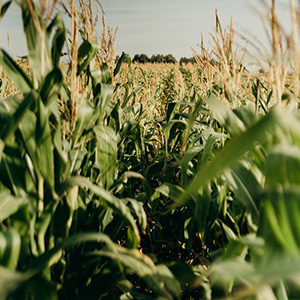Modelling the impacts of water harvesting and climate change on rainfed maize yields in Senegal

HTML: 79
All claims expressed in this article are solely those of the authors and do not necessarily represent those of their affiliated organizations, or those of the publisher, the editors and the reviewers. Any product that may be evaluated in this article or claim that may be made by its manufacturer is not guaranteed or endorsed by the publisher.
Authors
Senegalese agriculture is threatened by climate change effects, affecting rainfall variability both at interannual and interdecadal timescales. Using FAO’s AquaCrop crop-growth model, we tested the efficiency of an in situ water harvesting technique - tied ridges - for maize cropping in the Fatick region in Senegal in response to changes in temperature and precipitation with different fertility levels and different soils. Results showed that tied ridges did not significantly impact maize yields considering the current climate and soil fertility. The rainfall amount was enough for maize production and to avoid water stress during the cropping season. Under perturbed climates and, especially in years with low average rainfall amounts, high losses in yield were registered under optimal fertility conditions (up to 80%). The most substantial effect was obtained when tied ridges were simulated on clay soil, enhancing yields by 5.6% and 13% at actual and optimal fertility conditions, respectively. Our results highlighted how the current maize production in the Fatick region in Senegal is not significantly water constrained in the current climate scenario, while it could be potentially impacted by climate change in the near future. In a pessimistic climate change scenario, in situ water harvesting can potentially avoid excessive crop losses.
How to Cite

This work is licensed under a Creative Commons Attribution-NonCommercial 4.0 International License.
PAGEPress has chosen to apply the Creative Commons Attribution NonCommercial 4.0 International License (CC BY-NC 4.0) to all manuscripts to be published.
Similar Articles
- Ildar Gabitov, Samat Insafuddinov, Denis Kharisov, Elmir Gaysin, Timur Farhutdinov, Diagnostic method and device for evaluating and forecasting the technical condition of farm machinery in operation , Journal of Agricultural Engineering: Vol. 52 No. 4 (2021)
- Yanmei Meng, Tingting Zhang, Jin Wei, Jinlai Zhang, Xulei Zhai, Design and experiments of an automatic pipe winding machine , Journal of Agricultural Engineering: Vol. 54 No. 2 (2023)
- Giulio Senes, Natalia Fumagalli, Paolo Stefano Ferrario, Roberto Rovelli, Federico Riva, Giovanna Sacchi, Paolo Gamba, Giacomo Ruffini, Giacomo Redondi, Assessment of the ecosystem services given by rural and urban green areas to preserve high-quality territories from land take: the case of the province of Monza Brianza (Italy) , Journal of Agricultural Engineering: Vol. 54 No. 4 (2023)
You may also start an advanced similarity search for this article.

 https://doi.org/10.4081/jae.2023.1524
https://doi.org/10.4081/jae.2023.1524






